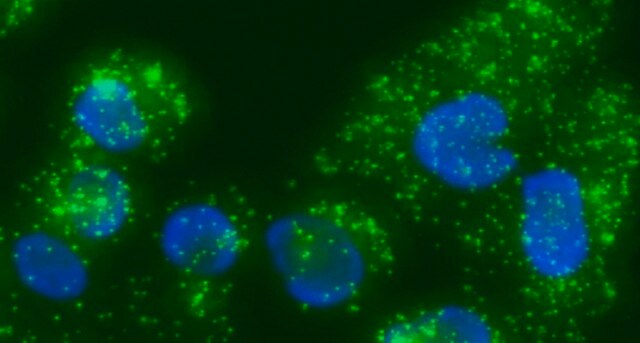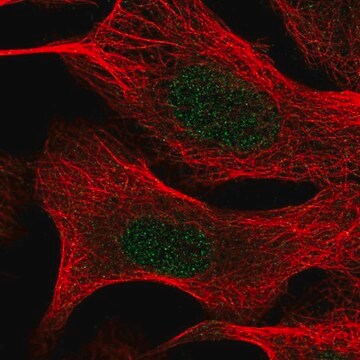DUO87009
Duolink® PLA® Probe Mouse Anti-PhosTyr PLUS from mouse
Protein Phosphorylation Detection by Proximity Ligation Assay
About This Item
Produits recommandés
Source biologique
mouse
Niveau de qualité
Forme d'anticorps
purified antibody (Protein G-Sepharose)
Type de produit anticorps
primary antibodies
Clone
4G10®, monoclonal
Gamme de produits
Duolink®
Espèces réactives
all
Technique(s)
proximity ligation assay: suitable
Adéquation
suitable for brightfield
suitable for fluorescence
Conditions d'expédition
wet ice
Température de stockage
2-8°C
Description générale
Spécificité
Application
This product can be applied to both the Duolink® In Situ Fluorescence Protocol and the Duolink® In Situ Brightfield Protocol depending on the detection reagents used.
Visit our Duolink® PLA Resource Center for information on how to run a Duolink® experiment, applications, troubleshooting, and more.
To perform a complete Duolink® PLA in situ experiment you will need two primary antibodies (PLA, IHC, ICC or IF validated) that recognize two target epitopes. Other necessary reagents include a pair of PLA probes from different species (one PLUS and one MINUS), detection reagents, wash buffers, and mounting medium. Note that the primary antibodies must come from the same species as the Duolink® PLA probes. Analysis is carried out using standard immunofluorescence assay equipment.HRP is also available for brightfield detection.
Application Note
Protein phosphorylation is considered as one of the key steps in signal transduction and regulation of enzymatic activity. Anti-phosTyr antibodies are commonly used in western blots after the targeted proteins have been immunoprecipitated to measure the tyrosine phosphorylation of the protein of interest. This process is time-consuming and cannot provide subcellular localization.
Anti-phosTyr PLA probes are used to detect the phosphorylation of tyrosine residues in proteins. Protein target specificity can be obtained by pairing with an antibody specific to a protein of interest in a Duolink® PLA® experiment. This product is particularly useful when site-specific anti-phosphorylation antibodies are not available. A MINUS PLA probe of a different species or another directly-conjugated primary antibody with a MINUS PLA oligo must be used in combination with this product. The Anti-mouse PLA probe PLUS (DUO92001) is not necessary when using this product. See our Product Selection Guide for more information.
Let us do the work for you, learn more about our Custom Service Program to accelerate your Duolink® projects
Caractéristiques et avantages
- No overexpression or genetic manipulation required
- High specificity (fewer false positives)
- Single molecule sensitivity due to rolling circle amplification
- Relative quantification possible
- No special equipment needed
- Quicker and simpler than FRET
- Increased accuracy compared to co-IP
- Publication-ready results
Informations légales
Vous ne trouvez pas le bon produit ?
Essayez notre Outil de sélection de produits.
Code de la classe de stockage
12 - Non Combustible Liquids
Classe de danger pour l'eau (WGK)
WGK 2
Faites votre choix parmi les versions les plus récentes :
Certificats d'analyse (COA)
Désolés, nous n'avons pas de COA pour ce produit disponible en ligne pour le moment.
Si vous avez besoin d'assistance, veuillez contacter Service Clients
Déjà en possession de ce produit ?
Retrouvez la documentation relative aux produits que vous avez récemment achetés dans la Bibliothèque de documents.
Notre équipe de scientifiques dispose d'une expérience dans tous les secteurs de la recherche, notamment en sciences de la vie, science des matériaux, synthèse chimique, chromatographie, analyse et dans de nombreux autres domaines..
Contacter notre Service technique





